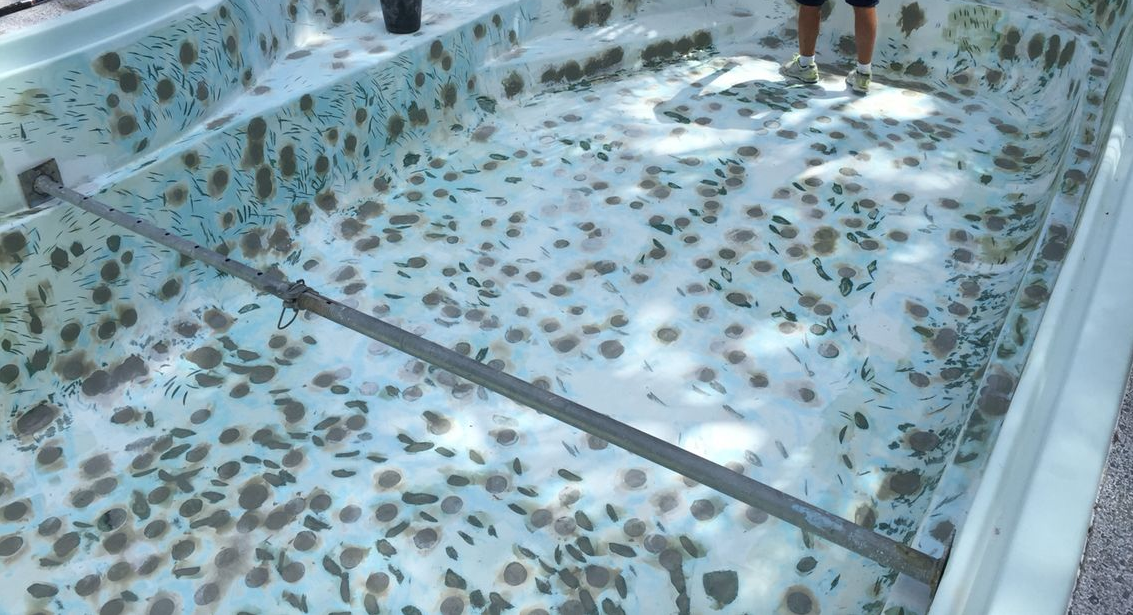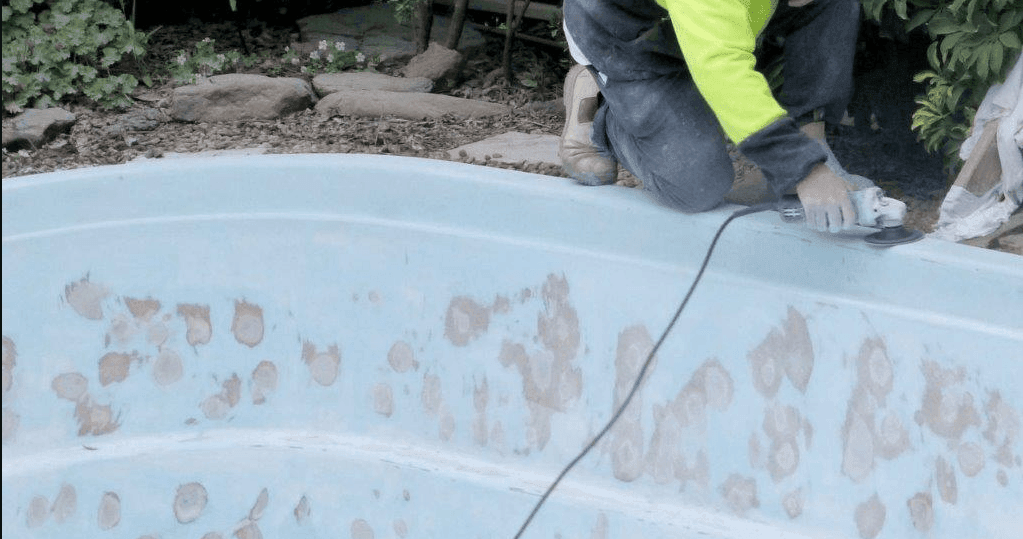Owning a pool can be a significant commitment, as it requires annual maintenance and regular upkeep to maintain an ideal atmosphere for relaxation. Most pool owners are aware of some of the most common problems, such as chemical imbalances and filtration system malfunctions, but are not aware of the potential problems that can occur as a pool ages. Pools that are ten to fifteen years old may experience problems in the fiberglass surface that confuse pool owners by developing raised bumps and dark colored bubbles. The cause? Osmosis
What is osmosis?
The scientific definition of osmosis, which refers to the movement of molecules through a semi-permanent membrane, is a fundamental concept in high school biology, but the application of the term as it applies to swimming pool surfaces is far less well known. Essentially, osmosis, also known as black plague, refers to bumps or bubbles that appear on the surface of a pool due to a faulty waterproof seal.
These imperfections are permanent or can come and go over time. The bumps that appear are often 2-10cm in diameter, feel hard or porous, and cannot burst or crack when stepped on or pushed. Some can leak a brown or black tar-like substance, which raises alarms among pool owners concerned about potential safety consequences. Treatments such as staining or popping do not reduce the effect, and shocking with high doses of chlorine can only make the problem worse.
Osmosis can basically occur with any pool. (GRP pool, concrete pool, polypropylene pool etc…)
Symptoms
Usually pool problems like osmosis occur after 10-15 years. The development of osmosis in a pool is usually a slow process and occurs in different phases.
Incidence of bubbles
The formation of bubbles or dents is the earliest sign of fiberglass swimming pool osmosis. Due to age, faulty construction, inferior material, or lack of maintenance, contaminated water from the outside surface of the pool penetrates through the fiberglass layer and over time forms thousands of air pockets between the fiberglass layer and the top gel layer. These pockets fill with moisture and air over time, causing the top gel layer to lose its flexibility and bubbles to break out on the inside of the pool.
Algae formation
As the bubbles age, they eventually break open and begin to ooze black/brown substance that forms algae within the pool surface called black plague.
Muddy or contaminated pool water
Bubble bursting brings bacteria and dirt-filled contaminants into your pool water. If your pool water is muddy or dark in color, it may be a sign of osmosis.

Water loss
As a result of the leakage of the pool may also be water loss in the long term. This is not only expensive in the long run, but also harms the environment.
Causes
There are a number of ways that osmosis can cause problems in your pool, but in general, most black plague problems are related to the age, quality of the pool, how it is installed and maintained.
The type of materials used
The quality of the material used to make your fiberglass pool gelcoat, coated laminate and resin can affect the bubble resistance of your pool.
Faulty manufacturing and construction techniques
Most osmosis problems are due to the type and construction of the laminate that is placed on the inside of the pool. If improperly constructed, fiberglass pools are coated with a resin-soaked cloth mat that can expose the pool to water saturation, resulting in brownish-black bubbles.
Maintenance
Maintenance or rather deficiency can accelerate the formation of osmosis.If the maintenance and operating conditions of a pool are ignored, osmosis is much more likely. Excessive heat exposure can accelerate the process; therefore, pools kept at a high temperature are much more likely to suffer the consequences. Pools that need to be kept warm above 86 degrees on a regular basis should be built with heat and chemical resistant resins rather than standard products.
The use of chemicals can also be a factor. When chlorine levels are too high, especially when combined with high temperatures, black plague is more likely to occur. Shock in the pool can be a particularly dangerous factor; increased use of shock can quickly accelerate the process, leading to osmosis symptoms that can occur years in advance. To reduce this risk, make sure your pool’s pumps are operating normally and track both chlorine and pH levels regularly.
Osmosis is an unwelcome sign in any pool, but understanding what you’re dealing with can help you find the right solution. At the first sign of a black plague in your pool, it’s important to get professional help to diagnose your problems and provide an appropriate remedy to get your pool back up to code as quickly and inexpensively as possible. If you think you may have an osmosis problem, call us or request an estimate and we will investigate your issues.
Increased outdoor and water temperature (above 30°C) can make your pool’s coating porous and can make it more reactive to chemicals that can increase the osmosis rate.
Secondly, the excessive use of chlorine-based chemicals in water treatment weakens the surface of the coating and makes it more susceptible to the formation of black plague.
Redevelopment / Repair
If you want to be on the safe side, you should choose the right pool liner when creating the pool or swimming pool. For this reason, we offer exclusively our tested and certified
polyurea
spray film for pools and swimming pools. This is many times more resilient than standard films.
We also use them for redevelopment. The damaged layer must be removed or ground down. Once this is done our polyurea system can be applied. After proper application and just maintenance, osmosis of various kinds is almost impossible.
The cost of the restoration depends largely on the damage and the system that is ultimately chosen. To get an exact information you should have it examined by a professional. You can find the request form for this below.
Note: We offer refurbishment solutions for steel, sheet metal, aluminum and polyethylene pools only.

Prevention
To avoid osmosis preventively, one should know the previously mentioned causes and also avoid them accordingly. For new construction, it is recommended to choose the right material and professional application. After that, it is also necessary to maintain them properly.